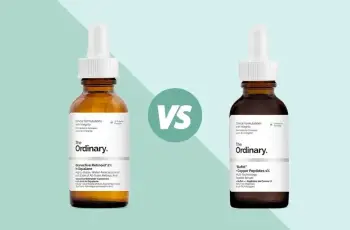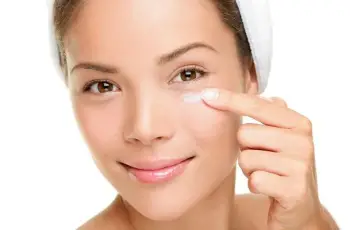
Understanding Cystic Acne: Causes, Symptoms, and Treatments
Cystic acne can be frustrating, painful, and often persistent. It’s a severe form of acne that primarily affects individuals in their teens and early adulthood, but can appear in men and women of all ages.
If you’ve been dealing with painful, deep pimples and wondering why cystic acne occurs, you’re not alone.
Many people experience this condition, which is often more challenging to treat than regular pimples or blackheads.
But don’t worry, we’ll explore the ins and outs of cystic acne, its causes, and how to effectively treat it.
What is Cystic Acne?
Cystic acne is a type of acne that results in large, painful bumps beneath the skin. These cysts are filled with pus, which can make them particularly uncomfortable.
Unlike surface-level pimples, cystic acne is deep-rooted and can cause significant inflammation.
It occurs when the hair follicle, or pore, becomes clogged with sebum (the skin’s natural oil), dead skin cells, and bacteria, which leads to infection.
The body attempts to fight off the infection by triggering an inflammatory response, causing the cysts to form.
If left untreated, the cysts can rupture, leading to scarring, which makes cystic acne more troublesome for many people.
Why Do I Get Acne Cysts?
Cystic acne can affect anyone, regardless of age or gender. However, it is more common in teenagers due to hormonal fluctuations.
These fluctuations cause the sebaceous glands to produce excess oil, which can clog the pores.
While hormonal changes are the most significant factor, there are several other triggers that can contribute to cystic acne. These include stress, poor diet, and the use of certain skincare products.
Hormones, in particular, play a critical role in cystic acne. Androgenic hormones, like testosterone, can increase the size and activity of sebaceous glands.
This leads to more sebum being produced, which can block pores and create an environment conducive to acne formation.
Where Does Cystic Acne Appear?
Cystic acne can occur in various areas of the face and body, but it’s most commonly found along the jawline, chin, cheeks, and forehead.
Additionally, cystic acne can develop on other parts of the body, including the back, chest, scalp, and even buttocks.
The cysts can vary in size, from small bumps to large, painful lumps that are highly visible.
Because cystic acne is often deep beneath the skin’s surface, it’s not just unsightly but also painful. These cysts tend to be recurrent, often appearing in the same areas, which can make treatment difficult.
The Science Behind Cystic Acne
Understanding how cystic acne forms can help you manage it better. Let’s break down the process:
Clogged Pores: Acne starts when hair follicles, which are tiny openings in the skin where hair grows, get clogged. This is typically caused by an accumulation of excess sebum and dead skin cells.
Bacterial Growth: Once the pore is clogged, bacteria, particularly Cutibacterium acnes (formerly known as Propionibacterium acnes), thrive in the pore. These bacteria cause inflammation and infection.
Inflammation: The body’s immune system reacts by sending white blood cells to the affected area. This causes the surrounding skin to become red, swollen, and tender, leading to the formation of a cyst.
Cyst Formation: The pressure from the buildup of oil, bacteria, and dead skin cells causes the follicle wall to break, leading to the development of a painful cyst.
What’s Inside a Cyst?
When you pop or squeeze a cyst, you’ll notice a thick, white substance oozing from it. This “white stuff” is primarily keratin, a protein that makes up hair, nails, and skin.
The presence of keratin in cysts is why the fluid inside is thick and often smelly.
In addition to keratin, acne cysts contain a combination of the following:
Sebum: Oil produced by the skin’s sebaceous glands.
Keratin: A protein that is naturally produced by skin cells.
Dead Skin Cells: Cells that have sloughed off the surface of the skin and are trapped in the clogged follicle.
Pus: A thick, yellowish fluid that consists of dead white blood cells, bacteria, and tissue debris.
Bacteria: Cutibacterium acnes, a type of bacteria known to cause acne, plays a significant role in triggering inflammation and infection.
Common Causes of Cystic Acne
Cystic acne can be caused by a combination of genetic and environmental factors. Below are some of the most common causes:
Hormonal Changes: The biggest trigger for cystic acne is hormonal fluctuations, particularly during puberty, pregnancy, or menstruation.
Androgens, which are male hormones found in both men and women, can increase oil production in the skin.
Excessive Oil Production: Sebaceous glands that produce too much oil can lead to clogged pores. The accumulation of oil creates an environment where acne-causing bacteria can thrive.
Stress: Stress stimulates the release of cortisol, a hormone that can increase oil production and inflammation in the skin, potentially leading to acne flare-ups.
Poor Diet: Diets high in sugar, dairy, and processed foods have been linked to increased acne.
Foods that cause spikes in blood sugar levels, such as refined carbs, can trigger the production of sebum and lead to clogged pores.
Comedogenic Skincare Products: Certain skincare products, especially those containing heavy oils, silicones, or artificial fragrances, can clog pores and exacerbate acne.
Genetics: If your parents had cystic acne, you are more likely to experience it as well.
Insulin-like Growth Factor (IGF-1): This hormone, which is produced when you consume dairy and certain proteins, can increase the production of oil and lead to acne.
Treating Cystic Acne: What Works?
Although there is no one-size-fits-all solution, the right treatment plan can significantly reduce cystic acne.
While you may see over-the-counter treatments for cystic acne, it’s important to consult with a dermatologist for severe cases. Here’s a breakdown of the most effective treatments:
Retinoids: These Vitamin A derivatives are considered one of the most effective treatments for cystic acne. They help regulate skin cell turnover and prevent clogged pores.
There are both topical and oral retinoids available, but you’ll need a prescription for the oral version.
Oral Antibiotics: These help reduce bacteria and inflammation. Commonly prescribed antibiotics include doxycycline and minocycline.
Topical Antibiotics: Topical treatments like clindamycin can reduce bacteria on the skin’s surface and prevent new breakouts.
Oral Contraceptives: Birth control pills that regulate hormones can help balance the hormonal fluctuations that trigger cystic acne in women.
Corticosteroid Injections: For large, painful cysts, dermatologists can inject a corticosteroid directly into the cyst to reduce inflammation and speed up healing.
Chemical Peels and Laser Therapy: In-office treatments like chemical peels and laser therapy can help reduce acne scarring and prevent future breakouts by targeting the deeper layers of the skin.
Vitamin Supplements for Cystic Acne
Certain vitamins can be helpful in managing cystic acne. Retinoids, which are derived from Vitamin A, are often prescribed by dermatologists for severe acne.
However, you should avoid taking excessive amounts of Vitamin A, as it can be toxic in high doses.
Vitamin A: Helps regulate skin cell turnover and prevent clogged pores.
Vitamin D: May reduce inflammation associated with acne.
Zinc: Known for its anti-inflammatory properties, zinc can help reduce acne breakouts.
Vitamins to Avoid
Vitamin B6 and B12: These vitamins can sometimes cause acne flare-ups, particularly in people taking bodybuilding supplements. Be cautious when choosing supplements if you have cystic acne.
Skincare Products for Cystic Acne
When selecting skincare products, always opt for non-comedogenic formulas that won’t clog your pores.
Choose products that are suitable for your Baumann Skin Type, a system designed by dermatologists to tailor skincare to your unique skin needs.
Ingredients to Avoid:
Heavy oils: Such as coconut oil, which can clog pores.
Silicones: Found in some primers and moisturizers, they can create a barrier that traps oil and bacteria in the skin.
Ingredients to Look for:
Salicylic Acid: A beta-hydroxy acid that exfoliates and helps keep pores clear.
Benzoyl Peroxide: Known for its antibacterial properties, it helps reduce the bacteria that contribute to cystic acne.
Final Thoughts on Cystic Acne
While cystic acne can be persistent and challenging, with the right treatment plan, it is possible to manage and reduce flare-ups.
If you suspect your cystic acne is hormonally driven, a visit to a dermatologist can help you determine the best course of action, whether that involves topical treatments, oral medications, or a combination of both.


